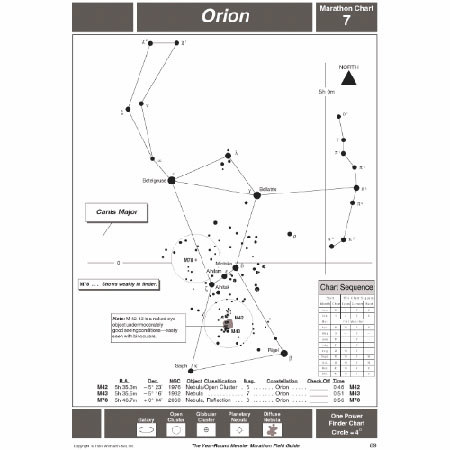
This item is no longer available.
Review Summary
2010-09-13T21:00:00
this book will teach you how to star hop.don't need go-to with this book.one of my first books and now i can find anything on a star chart if its bright enough for my scopes magnitude level.harvard pennington passed away,but i'm sure glad i learned his system.geometric locating,it works.follow whats in the book,you won't be sorry to learn the old fashion way.don't need batteries.
gene,staren s.
excellant bookto learn astronomy
By gene,staren s.
this book will teach you how to star hop.don't need go-to with this book.one of my first books and now i can find anything on a star chart if its bright enough for my scopes magnitude level.harvard pennington passed away,but i'm sure glad i learned his system.geometric locating,it works.follow whats in the book,you won't be sorry to learn the old fashion way.don't need batteries.
Among the deepest satisfactions of amateur astronomy is knowing your way around the sky. From the familiar guideposts of the brightest stars, you confidently point your binoculars or telescope toward the Andromeda galaxy, the Hercules cluster, or the Lagoon nebula.
This book was written for the person who wants tobecome deeply familiar with the most famous list of 110 deep-sky wonders, the Messier objects.
Using bright guidepost stars and detailed sky charts, the novice soon learns how to find the nebulae, star clusters, and galaxies that every amateur astronomer should know.
And you need not run this marathon just a few weeks a year. Even at the worst you will have about 90 of the 110 objects visible throughout the year!
The observing techniques taught in this book are both easy to learn and powerful, suitable not only for the novice but also for the experienced amateur.By following the sequence of charts presented in the second half of the book, a beginner using Harvard Pennington's methods should be able to locate and identify 25 to 30 Messier objects at any time of year before midnight.
By working systematically against time, by running the Messier Marathon the observer quickly hones crucial observing skills and soon gains a deep familiarity with the night sky. Once each year, on a moonless night during late March or early April, observers have an opportunity to test their skills by trying to observe all 110 objects that make up the Messier catalog in just one night!
In the early evening, its a race against time to sight the first objects before they set. During the night, marathoners maintain a steady pace to find object after object, and as the dawn light grows, they try to spot the last one before it is lost in the morning twilight. It is not easy, but those who have done the dusk-to-dawn Messier Marathon run it again and again.